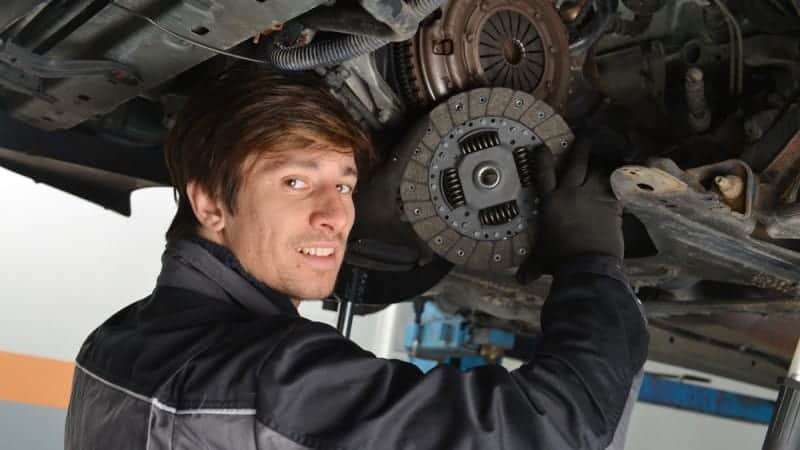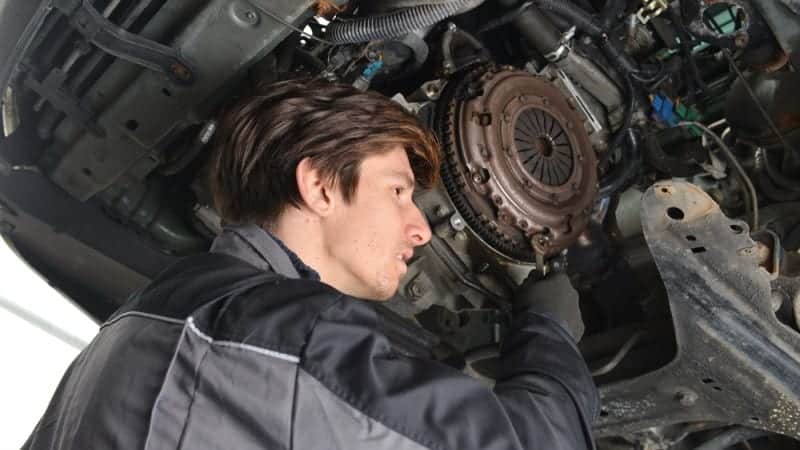A clutch is standard on practically all mechanical equipment. Your manual transmission actually has many clutches, which can come as a surprise to some. When it comes to automatic transmissions, the same holds true. There is a clutch on mechanical toys, chainsaws, and cordless drills. The clutch is centrifugal in design and used by chain saws and kid yo-yos.
Perhaps you’re wondering, “What is a clutch?” or “What does a clutch do?” To answer your questions, this post has given you more than enough information. In addition, it will explain what to look out for in terms of worn clutches and how to prevent clutch issues. Take a five-minute break and read.
Clutches: What Are They and How Do They Operate?

The clutch is the part of a manual transmission that engages and disengages the driveshaft. To change gears, the driver must depress the clutch pedal, which is an additional movement. The clutch is an essential component for gear engagement and disengagement.
“What the fuck is a clutch pedal?” you may be asking. Manual vehicles use the third pedal. It sits on the floor beneath the driver’s seat, immediately after the brake pedal. When pressed, the clutch disconnects power from the engine to the transmission; the driver gives the signal to engage or disengage the clutch.
The flywheel, clutch disc, throwout bearing, and drive plate are the components of the clutch. Diaphragm springs are incorporated into the design of the clutch disc.
At the back of the crankshaft, between the engine and transmission, is where you’ll find the clutch disc attached to the flywheel. Pressure is applied to the driven plates by means of the pressure plate. When it comes to applying pressure, older vehicles use coil springs, whereas contemporary cars use diaphragm springs.
Splined shafts are the intended operating mechanism for diaphragm springs. It sits in the space between the flywheel and the pressure plate. A throwout bearing’s job is to disconnect the engine from the gearbox by releasing the spring load, which can be done via hydraulic or cable control.
Now that we’ve covered the parts of a clutch and what they perform, the next question is: how does it operate?
With each press of the clutch pedal, the down clutch kit’s hydraulic piston or cable forces the release fork into action. After that, the clutch pressure plate is pressed against by the clutch moon, which is also called the release bearing, thanks to the clutch fork.
As the pressure plate retracts from the drive plate, it removes friction from the flywheel and driven plate by pulling the clutch disc with the help of many diaphragm springs. This causes the flywheel, which transfers the power from the engine to the gearbox, to become unbalanced.
You can swap gears smoothly and effortlessly to other gear ranges when you separate the transmission from the engine.
When the clutch is fully engaged and the pedal is released, rational force is released on the driving plate by the pressure plate. To transfer rational power to the gearbox, the driven plate rotates under the pressure plate, which is directly mounted on the flywheel, which is mounted on the rear end of the crankshaft.
How Can You Tell If Your Clutch Is Worn Out?

When a driver’s clutch is malfunctioning, a number of warning signs will appear. Here is a comprehensive list of signs that indicate a worn clutch
- Soft clutch pedal
- Hard gear shifting
- Stiff clutch pedal
- Slipping clutch
- Higher clutch pedal
Conclusion
Having covered the function of the clutch, common issues with them, and how to correct them, the next step is to keep an eye out for the symptoms mentioned earlier and address any issues with the clutch before they harm your transmission.
No matter how helpful the clutch application is, you should only use it when absolutely essential. Unless you’re in first gear, you shouldn’t press down on the clutch.
If you want your clutch to last as long as you anticipate it to, or longer, then you should avoid wearing down its components too soon by changing the way you drive.





